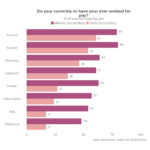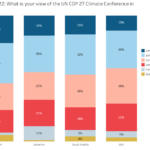This article discusses a variety of major explanations for the intensity of recent protests in Arab states and investigates whether there is empirical support for them. We survey various political, economic, and social factors and develop a comprehensive empirical model to estimate the structural determinants of protests in 19 Arab League states between 1990 and 2011, measured using events data. The results show that protests were stronger in countries with higher inflation, higher levels of corruption, lower levels of freedom, and more use of the internet and cell phones. Protests were also more frequent in countries with partial democracies and factional politics. We find no evidence for the common argument that the surge in protests in 2011 was linked to a bulge in the youth population. Overall, we conclude that these economic, political, and social variables help to explain which countries had stronger protest movements, but that they cannot explain the timing of those revolts. We suggest that a contagion model can help explain the quick spread of protests across the region in 2011, and we conduct a preliminary test of that possibility.
View External SiteTopics
- Charity2
- Corruption113
- COVID-1969
- Democracy35
- Discrimination13
- Economy225
- Education51
- Environment36
- Extremism19
- Freedoms50
- Gender Issues159
- Governance253
- Health44
- International Relations192
- Labor Market34
- Media31
- Migration63
- Political Institutions213
- Political Participation33
- Political Systems60
- Refugees6
- Religion118
- Security31
- Social Justice44
- Wellbeing2
- Youth75


